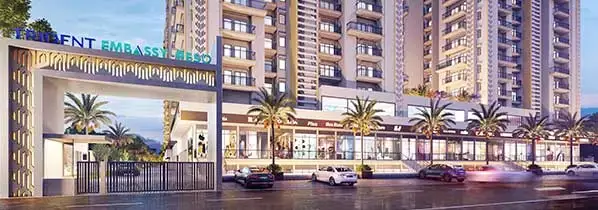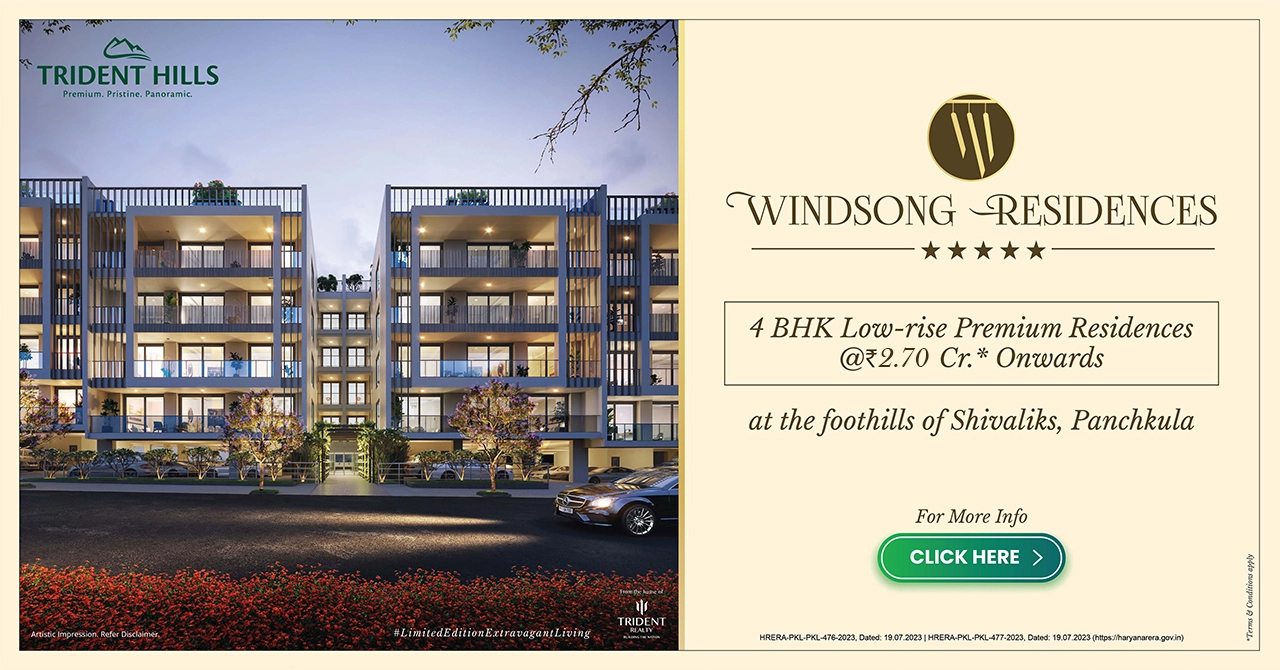
HNIs and the Rise of Experience-First Living in Indian Real Estate
In a nation poised to become the world’s third-largest economy, India’s affluent class is reshaping the landscape of luxury real estate. High Net-Worth Individuals (HNIs) and Ultra-High Net-Worth Individuals (UHNIs), whose numbers are surging, are no longer content with mere opulence. Post-pandemic, their aspirations have evolved towards exclusivity, wellness, sustainability, and technology-driven living. According to Knight Frank’s Wealth Report 2024, India’s UHNI population (net worth over USD 30 million) grew by 6.1% in 2023 to 13,263 and is projected to rise by 39% by 2025. This burgeoning wealth is fuelling a luxury real estate boom, with cities like Mumbai, Delhi NCR, Bengaluru, Hyderabad, Pune, and Tricity emerging as hotspots for premium residences. But what exactly is driving this transformation, and how are developers responding to the discerning demands of India’s elite? This blog delves into the evolving preferences of HNIs, the post-pandemic shifts redefining luxury, and the cutting-edge trends shaping India’s most exclusive residences. From branded residences to sustainable smart homes, we explore why luxury real estate remains a compelling investment for India’s affluent. India’s economic ascent has created a burgeoning class of affluent buyers. The Knight Frank Wealth Report 2024 projects that India’s UHNI population will reach 19,908 by 2028, a staggering 50% increase from 2023. Meanwhile, the broader HNI segment (net worth above USD 1 million) is also expanding rapidly, with Goldman Sachs forecasting that India’s affluent consumer base will grow from 60 million in 2023 to 100 million by 2027. This wealth surge is catalysing demand for luxury homes, particularly among HNIs, UHNIs, and Non-Resident Indians (NRIs), who view premium real estate as both a lifestyle statement and a secure investment. Post-pandemic, the priorities of these buyers have shifted. The desire for exclusivity, privacy, and wellness-focused living has overtaken ostentatious displays of wealth. According to a CBRE India report, luxury home sales (priced above INR 4 crore) surged by 37.8% year-on-year from January to September 2024, with Delhi NCR and Mumbai accounting for nearly 90% of transactions. NRIs, capitalising on favourable exchange rates, are also driving this trend, with ANAROCK Research projecting NRI investments in Indian real estate to reach USD 14.9 billion by 2025, a significant portion targeting luxury homes. Today’s HNIs seek homes that reflect their global exposure and sophisticated lifestyles. Their preferences are reshaping the luxury real estate market, with several key trends emerging: The pandemic underscored the value of private, spacious residences. HNIs now gravitate towards low-density developments, such as gated villas or boutique high-rises with fewer units per floor. Wellness is no longer a buzzword but a cornerstone of luxury living. Buyers demand homes with meditation zones, indoor gardens, and air purification systems. Developments integrate wellness pods and terrace gardens, catering to health-conscious HNIs. According to the Indian Green Building Council, green-certified homes can reduce energy costs by 25%, making them a practical choice for eco-conscious buyers. Sustainability is a growing priority, with HNIs seeking homes that align with global Environmental, Social, and Governance (ESG) standards. Projects boasting certifications like LEED or GRIHA are in high demand. For instance, Trident Hills in Panchkula incorporates solar panels and rainwater harvesting, appealing to buyers who value eco-friendly living. Smart home automation is now a standard expectation. From AI-driven security systems to voice-controlled lighting, HNIs demand seamless technology integration. Many developments feature IoT-enabled systems, allowing residents to control their homes remotely. Luxury homes in India are increasingly mirroring global trends, offering hospitality-led experiences with concierge services, wellness zones, and private amenities. These curated residences cater to HNIs seeking more than just opulence—they want exclusivity and service. According to JLL India, branded residences made up a significant portion of luxury sales in 2024, signalling a shift towards lifestyle-driven investments. India’s luxury real estate market is diverse, with each city catering to distinct buyer preferences: Delhi NCR continues to dominate India’s luxury housing market, recording a 20% year-on-year price increase in 2024, according to JLL India Research. Gurugram remains the epicentre of ultra-luxury development, driven by strong connectivity, high-end gated communities, and proximity to corporate corridors—making it a preferred destination for both HNIs and NRIs. Meanwhile, Noida and Greater Noida are emerging as affordable luxury zones, witnessing 5–7% price appreciation in Q1 2024, as buyers seek value without compromising on premium living standards. Mumbai remains India’s luxury capital, ranking eighth globally for luxury residential prices, per Knight Frank’s Prime Global Cities Index. Areas like Malabar Hill and Worli command premiums, with projects featuring AI-driven elevators. Ultra-luxury homes priced above INR 40 crore saw a collective sales value of INR 2,443 crore in the first eight months of 2024, per ANAROCK. Bengaluru’s luxury market thrives on its tech-driven economy and pleasant climate. South Bangalore, particularly Koramangala, and East Bangalore’s Whitefield are hotspots, driven by proximity to IT hubs. Developers are planning 75 million square feet of new supply in 2025, catering to HNIs seeking sustainable, tech-enabled homes. Hyderabad has outpaced Mumbai and Delhi in market stability, with an 800% surge in luxury sales in Q1 2023, per CBRE India. Areas like Gachibowli and Jubilee Hills attract buyers with large villa projects and affordable luxury apartments. The city’s commercial growth and infrastructure, such as the Outer Ring Road, bolster its appeal. Pune’s cosmopolitan culture and IT sector drive demand for branded residences in Koregaon Park and Kalyani Nagar. The city recorded a 38% increase in stamp duty collections in 2024, reflecting robust luxury sales, per The Economic Times. The Tricity region (Chandigarh, Mohali, Panchkula) is emerging as a niche luxury market, with projects like Trident Hills in Panchkula offering sustainable, low-density living. Improved connectivity and proximity to Delhi NCR make it attractive for HNIs seeking tranquil yet accessible residences. The pandemic has fundamentally altered luxury real estate preferences. Key shifts include: The desire for safe, remote retreats has driven demand for second homes in destinations like Goa, Dehradun, and Alibaug. ANAROCK reports that luxury housing sales in the INR 10–20 crore segment doubled in 2024 to 360 units, reflecting this trend. HNIs now prioritise larger homes with dedicated home offices, wellness zones, and terrace gardens to accommodate hybrid work and leisure. The JLL Home Purchase Affordability Index notes that 30% of buyers in the INR 50–90 lakh range prioritise energy-efficient, spacious homes. Post-pandemic, buyers seek homes with outdoor spaces and wellness amenities. Developments like Westin Residences in Gurugram integrate private terraces and spa facilities, catering to this demand. Technology and sustainability are at the heart of modern luxury. Key innovations include: AI and IoT-enabled homes offer seamless control over lighting, climate, and security. Projects in Bengaluru feature voice-activated systems, elevating convenience and exclusivity. Green certifications are a hallmark of premium projects. The CREDAI-EY Report projects that green-certified buildings will account for 30% of new residential projects by 2025, driven by consumer demand and government incentives. With electric vehicle adoption rising, luxury developments are incorporating EV charging stations. Trident Hills in Panchkula, for instance, offers EV-ready infrastructure, appealing to eco-conscious HNIs. Hospitality-driven services like 24/7 concierge, in-house dining, and wellness management have become standard in today’s high-end residences, offering residents a lifestyle that closely mirrors five-star hotel living. This seamless blend of privacy and personalised service is a major draw for HNIs seeking comfort, convenience, and exclusivity under one roof. For HNIs and NRIs, luxury real estate is a strategic asset for diversification and long-term appreciation. Key considerations include: Luxury properties in prime locations like Mumbai and Delhi NCR have seen price increases of 10–20% annually, per JLL Research. Mumbai’s Worli saw a 49% price rise between 2019 and 2024, per ANAROCK. Real estate offers stability amid global economic volatility. Knight Frank notes that 28% of Indian UHNIs rent out second homes, generating passive income alongside capital gains. Long-term capital gains tax (12.5% with indexation for properties held over two years) makes luxury real estate attractive. NRIs benefit from double taxation avoidance agreements, enhancing returns. Branded and customised residences are rapidly gaining ground in India’s luxury real estate segment, driven by a growing appetite among HNIs for lifestyle-led living. These residences combine the trust of established names with a high degree of personalisation—offering curated interiors, tech-enabled comfort, and premium amenities managed with hotel-like precision. According to JLL India, over 75% of luxury buyers now place brand reputation at the centre of their purchase decisions. This shift marks a transition from purely asset-based ownership to one focused on elevated living experiences and prestige. India’s luxury real estate market is at a transformative juncture, driven by the aspirations of HNIs, UHNIs, and NRIs. No longer defined by mere extravagance, luxury now encompasses wellness, sustainability, and technology, reflecting the evolved priorities of India’s affluent. From the serene villas of Tricity to the high-rises of Mumbai, developers are crafting visionary residences that blend global standards with local sensibilities. As India’s wealth continues to grow, luxury real estate stands as a testament to ambition and success—a secure investment and a lifestyle statement. For discerning buyers, the time is ripe to explore developments that promise not just a home, but a legacy of elite living. The Rise of HNIs and UHNIs: A Wealth Surge Driving Demand
Changing Preferences: What HNIs Demand from Luxury Homes
Privacy and Low-Density Living
Projects like Windsong Residences of Trident Hills in Panchkula, offering Premium low-rise luxury apartments priced 2.52 Cr.* onwards, exemplify this trend, providing exclusivity and privacy in prime urban locations.
Wellness-Centric DesignSustainability and Green Certifications
Technology-Enabled Homes
Branded Residences
City-Specific Trends: Where Luxury Thrives
Delhi NCR
Mumbai
Bengaluru
Hyderabad
Pune
Tricity
Post-Pandemic Shifts: Redefining Luxury Living
Surge in Second Homes
Larger, Hybrid Spaces
Wellness and Outdoor Amenities
Smart Luxury Living: The Future of Elite Homes
Home Automation
Sustainability Certifications
EV-Ready Infrastructure
Concierge Services
The Investment Case for Luxury Real Estate
Appreciation Potential
Asset Diversification
Tax Implications
The Rise of Branded and Customised Residences
Conclusion: A New Era of Luxury Living









